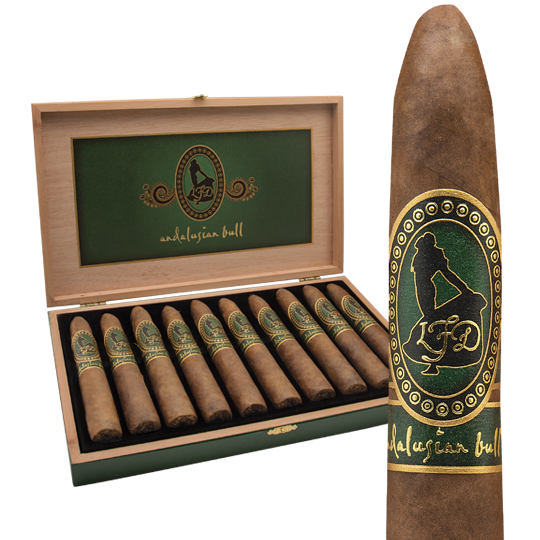Types of Cigars: 4 Attributes to Consider
Cigars represent a harmonious blend of craftsmanship, tradition, and personal preference. From casual smokers to seasoned aficionados, the allure of cigars lies in their variety. But choosing the right cigar can feel overwhelming without an understanding of the types available. This comprehensive guide explores the key components, categories, and characteristics of cigars to help you make an informed decision.
Components of a Cigar
Every cigar, regardless of its type, is constructed from three main components that define its structure and influence its smoking experience:
1. Wrapper
The wrapper is the outermost tobacco leaf and plays a major role in defining the cigar’s flavor, appearance, and texture. Wrappers vary in color, oiliness, and taste, offering a wide range of flavor profiles, from mild and creamy to rich and bold.
2. Binder
Beneath the wrapper lies the binder. This leaf holds the filler tobacco together and provides structural integrity. While it doesn’t contribute significantly to flavor, the binder ensures a consistent burn.
3. Filler
At the core of every cigar is the filler tobacco. This blend of leaves creates the body and complexity of the cigar’s flavor. Fillers come from various regions, and their arrangement determines the cigar’s burn rate and draw.
Why Types of Cigar Matters?
Choosing a cigar isn’t just about aesthetics; it’s about the experience. The type of cigar you select can significantly impact your smoking session, making it essential to understand the various attributes that differentiate them. Different types of cigars offer varying experiences in several key areas:
Flavor Profiles
Each cigar provides a unique flavor profile, influenced by the combination of wrapper, filler, and binder used. These profiles can range from earthy and spicy to sweet and floral. For instance, a cigar with a Connecticut wrapper might deliver a mild and creamy taste, ideal for beginners, while a Maduro wrapper offers rich, sweet, and full-bodied flavors with chocolate or coffee-like undertones, appealing to seasoned smokers.
Burn Qualities
The construction and size of a cigar play a crucial role in how evenly and long it burns. Well-constructed cigars burn evenly and maintain a consistent flavor throughout the smoking experience. Factors such as the type of tobacco, the tightness of the roll, and the length of the cigar can influence the burn quality, affecting the overall satisfaction of the smoker.
Experience Levels
Different cigars cater to smokers with varying levels of experience. Beginner-friendly cigars typically have lighter flavors and simpler designs, making them easier to handle and less overwhelming. In contrast, advanced cigars, often characterized by complex shapes and strong profiles, provide a more challenging and rewarding experience for seasoned smokers. These cigars allow experienced aficionados to explore intricate flavors and unique smoking characteristics, enhancing their enjoyment.
Common Types of Cigars
Cigars are broadly categorized into two main types based on their shape: Parejos and Figurados. Each type offers distinct smoking experiences and caters to different preferences.
Parejos (Straight-Sided Cigars)
Parejos are known for their straight sides and open foot, making them the easiest type to cut and light. They are the most common type and come in various sizes to suit diverse preferences.
Here’s a comparison of popular Parejo sizes:
- Corona: Known for its balanced flavor profile, making it a versatile choice for various occasions.
- Robusto: Offers a robust and satisfying smoke, ideal for shorter, more intense sessions.
- Churchill: Provides a long-lasting and consistent smoking experience, perfect for leisurely enjoyment.
- Lancero: Renowned for its slender shape, which enhances the wrapper's influence on flavor, delivering a more concentrated taste.
Parejos are beginner-friendly, offering a straightforward and enjoyable smoking experience without the complexities of shaped cigars.
Figurados (Shaped Cigars)
Figurados are more complex in design, featuring unique shapes that often reflect the artistry of the cigar maker. These cigars are celebrated for their rich, dynamic flavor delivery, as their construction allows for varied burn rates.
Popular Figurado styles include:
- Torpedo: Features a pointed head that narrows the draw and concentrates flavor.
- Pyramid: Wider at the foot and tapers towards the head for an even burn.
- Perfecto: Tapered at both ends, often requiring precise cutting for an optimal draw.
Figurados are a favorite among seasoned smokers who appreciate their craftsmanship and evolving flavor profiles.
4 Attributes That Differentiate Cigar Types
Cigars vary not only in shape but also in other essential attributes that define their smoking experience. These attributes include size, wrapper, strength, and origin.
1. Size and Shape
Cigar size and shape significantly influence the burn rate, flavor delivery, and smoking duration. Here’s a quick guide to popular sizes:
|
Type |
Length (inches) |
Ring Gauge |
Description |
|
Churchill |
6.5 - 7 |
47 - 50 |
Long with a balanced flavor; ideal for extended smoking sessions. |
|
Corona |
5.5 - 6 |
42 - 44 |
A classic size offering a steady, straightforward smoke. |
|
Gordo |
5 - 6 |
60+ |
Known as "fat cigars," delivering bold flavors and long smoking times. |
|
Lancero |
7.5 |
38 |
Slim and elegant; emphasizes wrapper flavors for complexity. |
|
Lonsdale |
6 - 7 |
42 - 44 |
Slightly longer than a Corona; provides smoother draws and nuanced flavors. |
|
Perfecto |
Varies |
Varies |
Tapered ends with unique burns, offering dynamic flavor transitions. |
|
Rothschild |
4 - 5 |
48 - 50 |
Short and flavorful; great for quick smoke breaks. |
|
Presidente |
7.5+ |
49+ |
Large and celebratory, also known as "Double Corona." |
|
Robusto |
4.75 - 5.5 |
48 - 52 |
Popular for its rich flavor and manageable smoking time. |
|
Salomon |
6.5 - 7 |
50+ |
Large and tapered; offers an evolving, premium smoking experience. |
|
Toro |
6 |
50 - 54 |
Medium-length, full-bodied cigar for a satisfying, longer smoke. |
To explore a variety of cigar shapes, check out our shape collection.
2. Wrapper
The wrapper is the outermost layer of a cigar and plays a pivotal role in determining its flavor and appearance. The type of wrapper is often the first thing smokers notice and directly affects the cigar's taste profile. Here are the most common wrapper types:
Light tan in color with a mild and creamy flavor profile, ideal for beginners.
Greenish hue due to minimal fermentation, providing a sweet and grassy flavor.
Reddish-brown shade with spicy and peppery notes, popular in medium to full-bodied cigars.
Earthy brown wrapper delivering a smooth, nutty flavor with subtle spice.
Reddish-dark brown color with bold and complex flavors, featuring a touch of sweetness.
Very dark, almost black in color, with a rich, sweet, and full-bodied taste that includes chocolate or coffee-like undertones.
To explore a variety of cigar wrappers, check out our wrapper collection.
3. Strength and Flavor
Cigars are categorized by their strength and flavor intensity, both of which influence the smoking experience. Strength refers to the nicotine level, while flavor profiles range from subtle to bold. Here’s a breakdown:
Mild Cigars
- Subtle and easygoing.
- Great for beginners or morning smokes.
Mild-Medium Cigars
- Slightly more complexity while remaining approachable.
- Perfect for transitioning from mild cigars.
Medium Cigars
- Balanced with moderate strength.
- Suitable for most smokers and pairs well with a variety of drinks.
Medium-Full Cigars
- Rich and bold flavors with stronger nicotine content.
- Appeals to seasoned smokers.
Full Cigars
- Intense and robust.
- Recommended for experienced smokers who enjoy bold profiles.
Flavored Cigars
- Infused with sweet or aromatic notes like vanilla, chocolate, or coffee.
- Popular among casual smokers and those seeking variety.
Discover more about cigar strengths in our strength collection.
4. Region or Origin
Cigar origin plays a significant role in defining its flavor and aroma. Different regions have unique soil, climate, and tobacco-growing traditions that influence the final product. Here are some of the most prominent cigar-producing regions:
- Nicaraguan: Known for its rich and earthy flavors, offering a range from bold and spicy to smooth and creamy.
- Dominican: Famous for smooth, mild to medium-bodied cigars that deliver nutty, sweet, and slightly spicy notes.
- Honduran: Characterized by robust and earthy flavors, appealing to smokers who enjoy full-bodied profiles.
- American: Often milder with unique blends, perfect for those exploring non-traditional cigars.
Explore our curated selection from different origins in our origin collection.
How to Choose the Right Cigar Type for You
Selecting the perfect cigar involves more than just preference—it’s about aligning the type of cigar with the occasion, your smoking experience, and your taste preferences. Here's how to make an informed choice:
Based on Occasion
The length and intensity of a cigar should match the time you have and the event's mood.
Shorter cigars, such as Robusto and Rothschild, are perfect for quick smoke breaks or casual settings, making them ideal for smokers with limited time.
Longer cigars, like Churchill and Presidente, are suited for celebratory or leisurely occasions, allowing more time to savor their evolving flavors.
Choosing the right size ensures the cigar complements the atmosphere and timeframe.
Based on Experience Level
Different cigars cater to smokers with varying levels of experience.
For beginners, it's best to opt for mild cigars with lighter wrappers, such as Connecticut. Smaller sizes like Corona or Robusto are easy to handle and less overwhelming.
On the other hand, seasoned smokers can explore full-bodied cigars with Maduro wrappers. Shaped cigars like Figurados add complexity to the smoking experience.
Matching the cigar to your experience ensures a smooth and enjoyable session without overwhelming your palate.
Based on Pairing Preferences
Pairing cigars with beverages or foods enhances the overall experience. Here are some popular combinations:
|
Pairing |
Suggested Cigar Type |
Description |
|
With Whiskey |
Medium to full-bodied cigars |
Complement the bold, smoky notes of whiskey |
|
With Coffee |
Mild cigars or flavored options |
Pair beautifully with coffee, enhancing the mild or flavored notes |
|
With Wine |
Medium-bodied cigars |
Balance the tannins and sweetness of red or white wines |
|
With Desserts |
Flavored cigars |
Offer a sweet finish to a meal, elevating the flavors of both cigar and dessert |
Conclusion
Cigars are more than just a smoking preference—they are an art form crafted to suit a wide range of tastes, occasions, and experiences. By understanding the different types of cigars, their components, and attributes like size, shape, strength, and origin, you can make informed choices to enhance your enjoyment.
Whether you're a beginner exploring milder options or an experienced smoker seeking bold flavors, there’s a perfect cigar for everyone.
At TRP Cigars, we pride ourselves on offering a diverse selection of premium cigars to suit every preference. Explore our collection today and discover your next favorite cigar! Whether you’re celebrating a milestone or simply enjoying a relaxing moment, TRP Cigars has the perfect blend for you.

